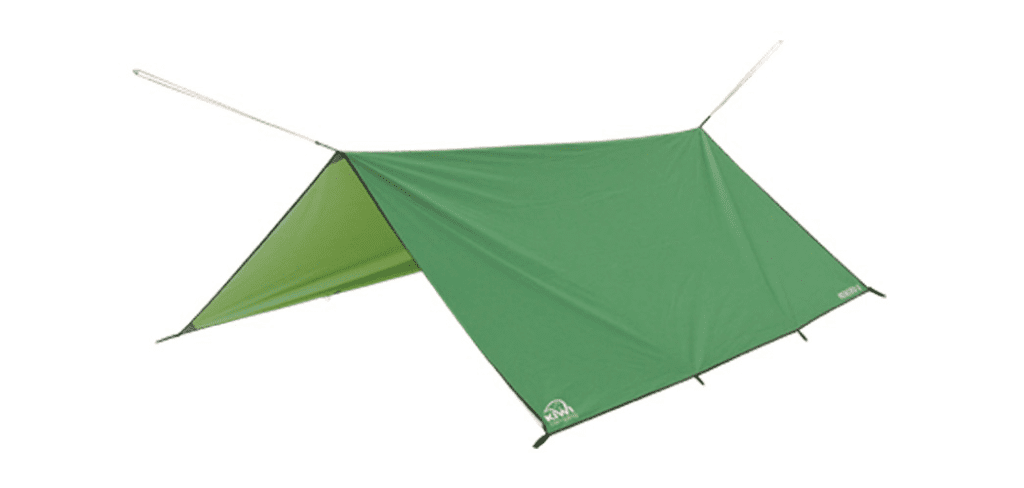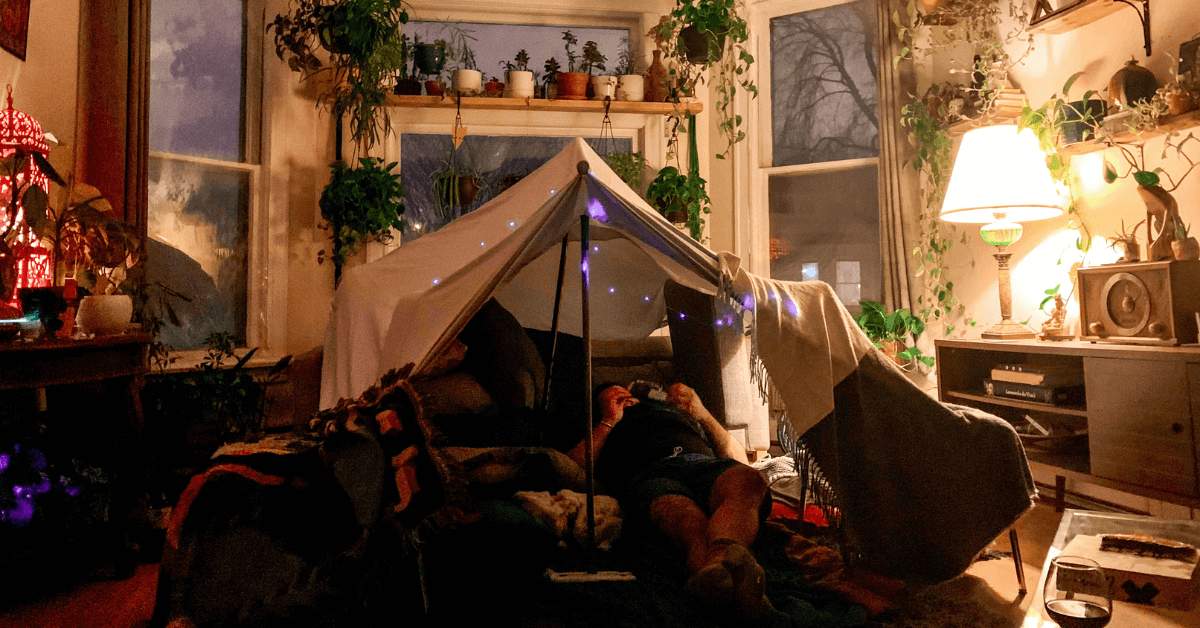Setting up a tent indoors might seem like an odd concept to some, but it can be a great way to create a cozy and adventurous atmosphere without the need for outdoor space. It’s also a perfect option for those living in areas with harsh weather conditions or during colder seasons when outdoor camping might not be possible.
Typically, when setting up a tent outdoors, the first step is to anchor it to the ground using stakes. However, when it comes to indoor camping, stakes are not an option, as they can damage floors and cause safety hazards. Hence, alternative methods of securing the tent have to be employed.
In this article, we’ll explore the steps involved in setting up a tent indoors without the use of stakes. We’ll also provide helpful tips for creating a comfortable indoor camping experience. So, whether you’re camping in your living room, basement, or garage, this guide has got you covered!
Why Set Up a Tent Indoors?
Indoor camping can offer a unique and memorable experience that differs from outdoor camping. It allows you to bring the outdoors inside, providing an escape from the daily routine, and creating an opportunity to bond with friends and family in a unique way.
Indoor camping can also be an excellent option for those who want to test their camping gear before heading out on an actual camping trip. It’s a great way to check if your tent is still in good condition and if any repairs or replacements are necessary. Moreover, camping indoors eliminates some of the traditional camping concerns, such as insect bites, rain, and cold weather.
Step 1: Choose a Suitable Location to Set Up Your Tent Indoors
When it comes to indoor camping, choosing the right location is crucial for creating a comfortable and safe environment. Here are some essential factors to consider when selecting a suitable location for setting up your indoor tent:
1. Spacious and Level Area
It’s essential to find a spacious and level area for setting up your indoor tent. Look for an area that can accommodate the size of your tent and provides enough space for you and your camping gear. A level surface is also essential to prevent the tent from tipping over and causing injury.
2. Identify Potential Hazards
Before setting up your tent, it’s crucial to identify potential hazards in the area. Check for objects that could pose a safety risk, such as sharp corners, low-hanging objects, or unstable furniture. Additionally, be aware of any electrical outlets or cords that could pose a hazard to your tent and equipment.
3. Consider Temperature and Ventilation
Indoor camping can be prone to temperature and ventilation issues, so it’s essential to choose a location that provides adequate airflow and maintains a comfortable temperature. Avoid areas that are too hot or too cold, such as next to a heater or air conditioner.
Instead, choose a location that allows for natural ventilation, such as near a window or door.
4. Privacy
Privacy is another crucial factor to consider when choosing a suitable location for indoor camping. If you’re setting up the tent in a shared space, such as a living room or basement, consider using a privacy screen or partition to create a separate space for your camping area.
This will provide you with some privacy and prevent disturbances from others in the area.
Step 2: Preparing the Tent
Once you’ve chosen a suitable location for your indoor camping adventure, it’s time to prepare your tent. Here are the steps involved in preparing your tent for indoor use without stakes:
1. Unpack the Tent
Start by unpacking the tent and laying out all the components on a clean and dry surface. Make sure to take inventory of all the parts to ensure that everything is present and in good condition.
2. Set up the Tent Poles
Next, assemble the tent poles according to the instructions provided by the manufacturer. Most tent poles consist of several sections that fit together to create a long pole that spans the width of the tent. Once the poles are assembled, insert them into the corresponding sleeves or clips on the tent.
3. Attach the Tent Fly

The tent fly is a waterproof cover that fits over the top of the tent and provides additional protection from the elements. Attach the fly to the tent by securing it to the poles with the provided clips or ties.
4. Add the Tent Footprint
A tent footprint is a groundsheet that sits under the tent and protects it from moisture and abrasions. If your tent comes with a footprint, lay it out in the desired location before setting up the tent.
5. Adjust the Tent
Once the tent, poles, fly, and footprint are in place, it’s time to adjust the tent for optimal comfort and stability. Adjust the tension on the poles to ensure that the tent is taut and free from wrinkles or slack areas. Adjust the position of the tent within the location to make sure it fits comfortably and provides ample space.
6. Secure the Tent
Since you can’t use stakes indoors, you’ll need to find alternative ways to secure the tent. One option is to use heavy objects, such as books or weights, to anchor the corners of the tent.
Another option is to tie the tent corners to nearby stable objects, such as furniture legs or wall fixtures. Be creative and resourceful in finding suitable anchoring options.
Step 3: Anchoring the Tent
Anchoring the tent is an essential step to ensure that it remains stable and secure during your indoor camping experience. Since you can’t use stakes indoors, you’ll need to get creative in finding alternative ways to anchor your tent. Here are some tips for anchoring your tent indoors:
1. Use Heavy Objects
One option is to use heavy objects, such as books or weights, to anchor the corners of the tent. Place these objects on the corners of the tent to keep it in place. You can also place heavy objects on the tent poles to keep the tent stable.
2. Use Sandbags
Another option is to use sandbags. Fill sandbags with sand or other heavy materials and place them on the corners of the tent to keep it in place. You can also place sandbags on the tent poles to keep the tent stable.
3. Tie the Tent to Stable Objects
If you have nearby stable objects, such as furniture legs or wall fixtures, you can tie the tent corners to them. Use rope or cord to tie the corners of the tent to these stable objects. Make sure to tie them tightly to ensure that the tent remains stable.
4. Use Bungee Cords
Bungee cords can also be used to anchor your tent indoors. Wrap the bungee cords around stable objects or attach them to furniture legs to secure the corners of the tent. The tension in the bungee cords will keep the tent in place.
5. Be Creative
The key to anchoring your tent indoors is to be creative and resourceful. Look around your indoor camping location for anything that can be used as an anchor. Chairs, tables, and even exercise equipment can be used to anchor your tent.
Step 4: Finishing Touches
Once you’ve anchored your tent and set it up, there are a few finishing touches you can add to make your indoor camping experience more enjoyable.
1. Lighting
Lighting is an essential element to create a cozy and comfortable indoor camping environment. You can use string lights, lanterns, or battery-powered LED lights to create a warm and inviting ambiance. You can also use a flashlight or headlamp for reading or navigating through the tent at night.
2. Comfortable Bedding
The right bedding can make a significant difference in your indoor camping experience. Use comfortable and warm sleeping bags, blankets, and pillows to create a cozy sleeping area. If you don’t have a sleeping bag, you can use regular blankets or comforters.
3. Entertainment
Indoor camping can be a fun and relaxing experience, but it’s essential to have some entertainment options on hand. Bring books, board games, cards, or a portable DVD player to keep yourself entertained during downtime.
4. Snacks
Snacks are an essential part of any camping experience. Bring your favorite snacks and drinks to enjoy while indoors. You can also prepare simple meals using a portable stove or microwave.
5. Personal Touches
Lastly, add personal touches to your indoor camping setup. Bring some indoor plants, photos, or small decorative items to create a homey and personalized feel to your indoor camping experience.
Related: How to Build Your Own Tent Pad
How to Set Up a Tent Indoors Without Stakes – Final Thoughts
To set up a tent indoors without stakes, you can use sandbags, heavy objects, or tape to secure the corners of the tent. First, assemble the tent and position it where you want it. Then, place the sandbags or heavy objects at each corner of the tent to keep it in place. Alternatively, you can use tape to secure the corners of the tent to the floor or walls.
Whether you’re camping indoors for fun or necessity, following these simple steps will help you set up your tent without any hassle. So grab your tent, gather your materials, and get ready to enjoy the great indoors!
